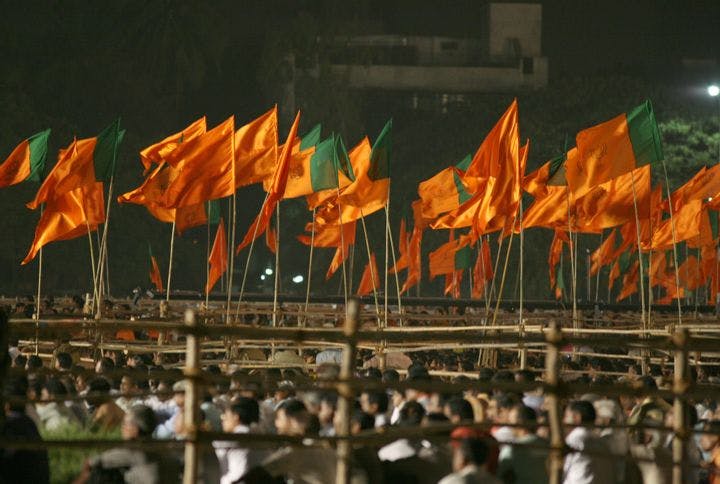Fall 2008
India's Sick Democracy
– The Wilson Quarterly
India's parliamentary system is in a shambles, and may only get fixed when the country's small parties put enough pressure on the two dominant one.
The recent debate over the Indian-American nuclear cooperation agreement didn’t do a lot for the bottom-feeder image of the Indian parliament. Chanting, raging legislators heckled speakers and stormed the well, members of parliament who had been jailed for murder were let out to vote, and a hospitalized lawmaker was wheeled in on a gurney. Three members of the main opposition, the Bharatiya Janata Party (BJP), interrupted a Communist opponent in midspeech, waving wads of rupees they said were a down payment on a $2.1 million bribe that the BJP members said they had been offered by the camp of the ruling Congress party to vote for the deal. On July 22 the Lok Sabha, the lower house of parliament, finally ended months of suspense by handing the government a slender victory, 275 to 256. Prime Minister Manmohan Singh squeaked out a vote of confidence to keep him in power until he can run again next May.
The Indian public blames the average parliamentarian—in 2004, one-quarter of the legislators had criminal backgrounds—for the shambles that is the Parliament of India, writes Jessica S. Wallack, the director of the Center for Development Finance in Chennai, India. But the dysfunction of the legislative branch goes deeper than the presence of a few murderers and thugs. Some of the problems are embedded in the structure of the institution.
The symptoms of failure read like a political-science disaster checkoff: Budgets pass in a flash; deliberations barely occur. Absenteeism is rife, disruptions frequent, and policy research rare. The bureaucracy must make policy (because the parliament can’t agree) even as it is subject to the tyranny of being transferred around the country by legislative fiat. Judicial activism has kept the government functioning, but legislative failures are so great that two Supreme Court justices recently wrote that the public is fast losing faith even in the courts.
The problem is fundamental, Wallack writes: “India’s parliamentary procedures stand out among parliaments around the world in the limitations they place on most members’ ability to represent their constituents in the normal course of debate or policymaking.” Average members have little or no chance to ask questions, introduce bills, propose amendments, participate in meaningful debate, or disagree with their party. “Coalition members’ powers to dissent are limited to the ‘nuclear option’ of bringing down the government.” There is no intermediate way to work out disagreements.
The main hope for change is the rise in political competition. With small parties nipping at the heels of the long-dominant Congress party and the BJP, Indian leaders may eventually decide that if they don’t fix the fundamental parliamentary rules, they may find themselves on the outside looking in.
* * *
THE SOURCE: “India’s Parliament as a Representative Institution” by Jessica S. Wallack, in India Review, April–June 2008.
Photo courtesy of Al Jazeera English
